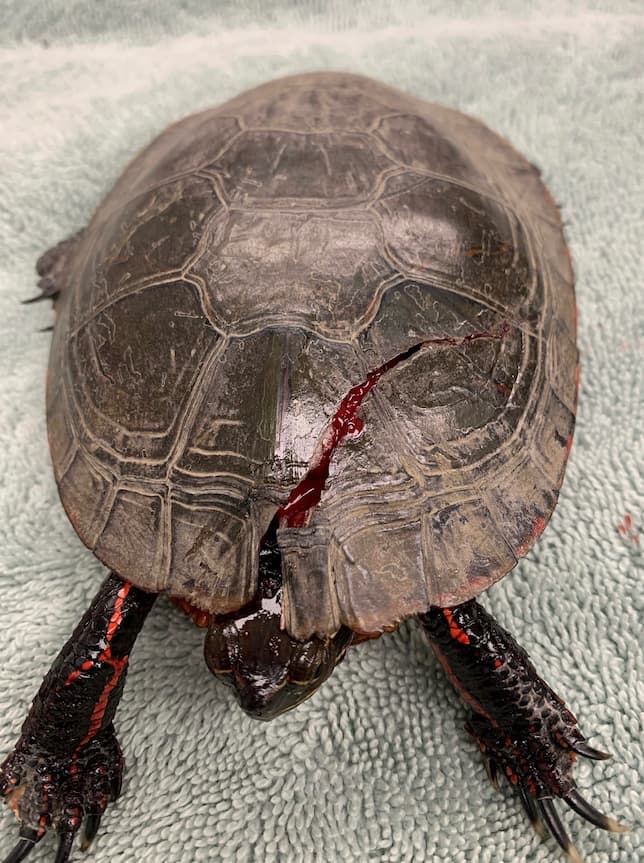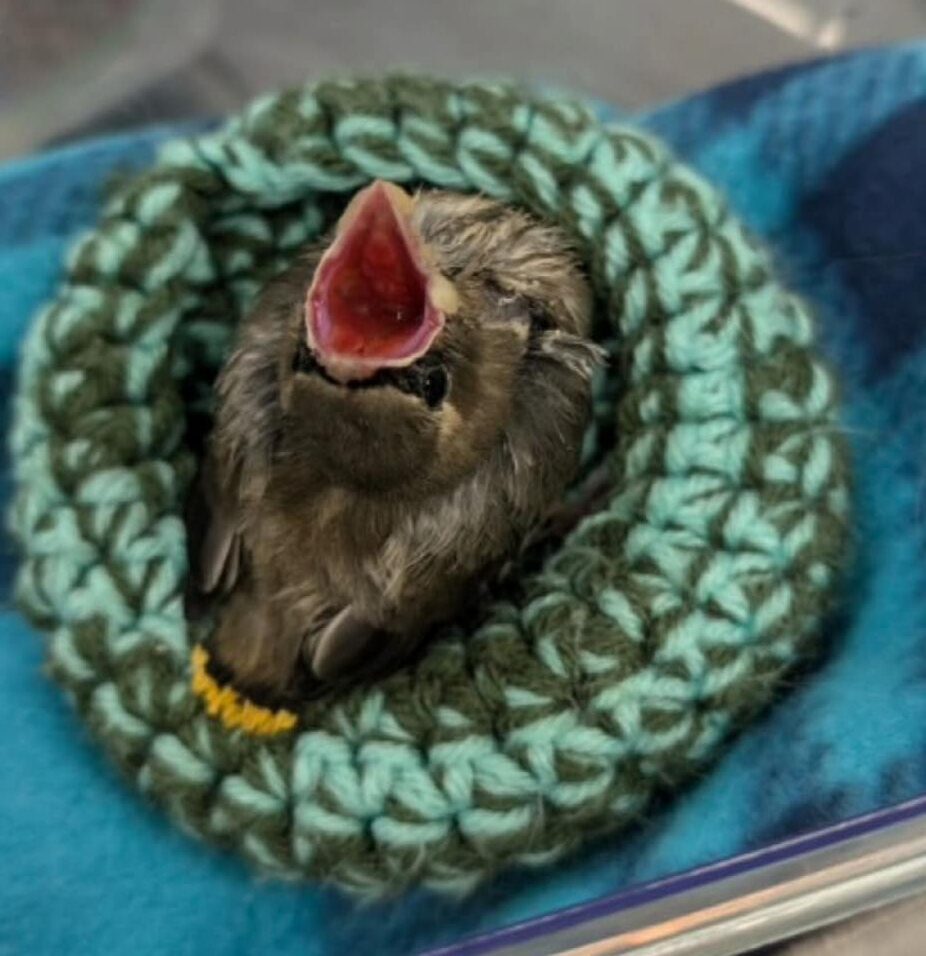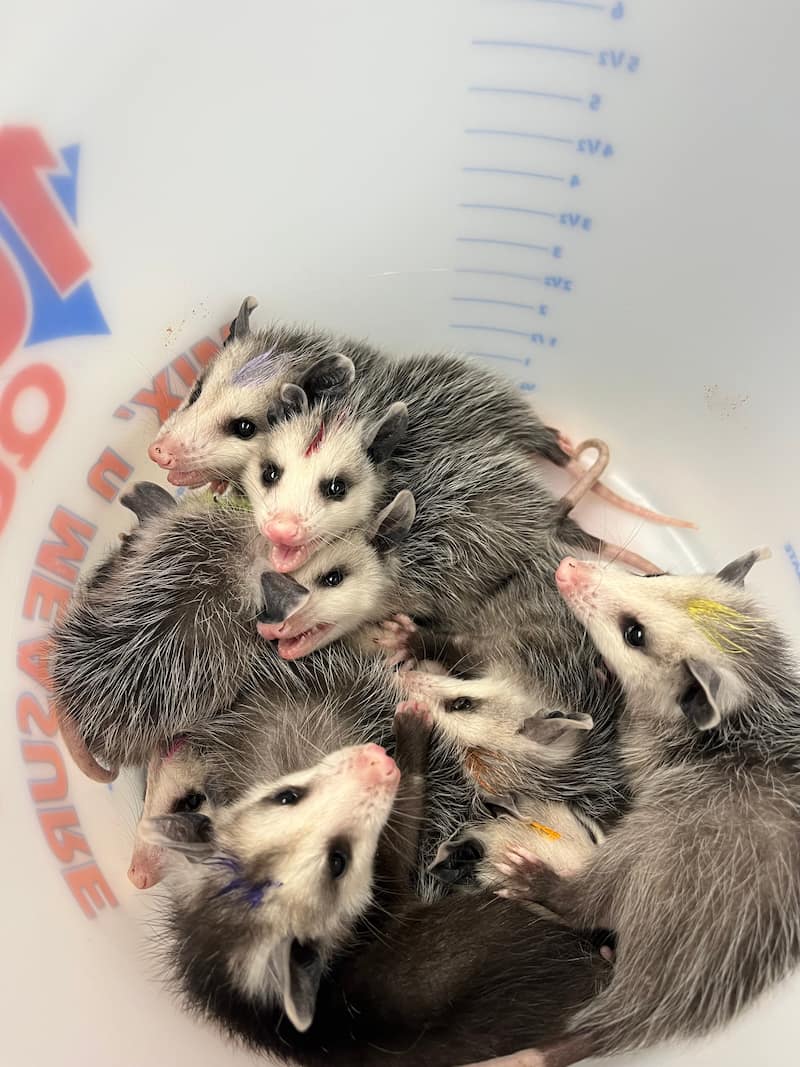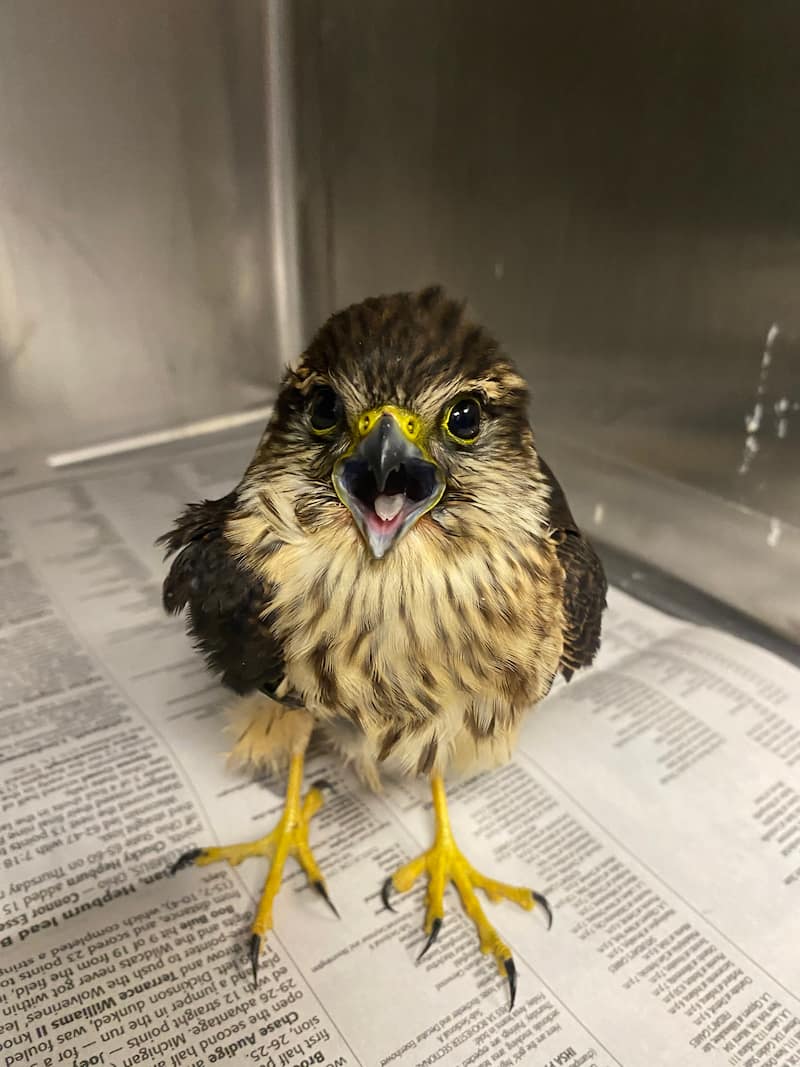The Wildlife Medical Clinic commonly receives turtles in need of shell repairs. Recently, an injured adult Midland painted turtle (Chrysemys picta) was admitted to the clinic for “having a cracked shell.” Chrysemys picta are the most widespread native turtles of North America. They are normally found in slow moving freshwater. These turtles do not migrate and will stay in a single area their entire lives. Due to their unique markings and vibrant red and yellow coloring, these turtles are easily identifiable. These markings can be seen on the lower portion of the shell which is called the plastron and the upper jaw. This specific turtle was identified as a male based on the length of the nails, and the placement of the cloaca as these features differ between males and females, as well as overall size of the individual.
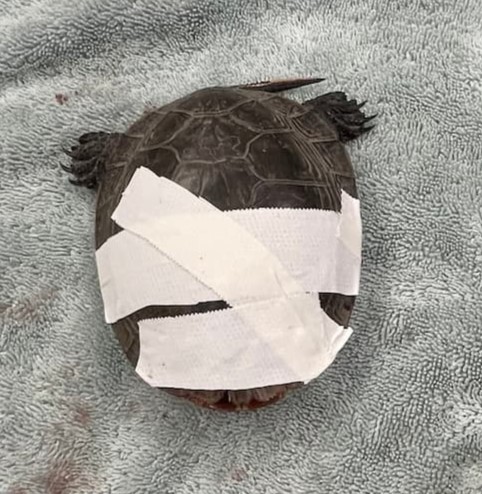
During the initial exam, a large fracture was found on the carapace or the top portion of the shell. The fracture started from the cervical scute which is the middle of the shell near the turtles head and crossed over to the left bridge of the shell, which is basically the side of the turtle, but the middle where the carapace and plastron are connected. Thankfully, no crack was seen on the plastron, so this turtle had a better chance of recovering from its injuries with its shell completely intact. However, it was not evident on the examination whether the trauma extended into the body cavity affecting his lungs and other organs. Although the patient was actively trying to escape, the team noticed that his eyes were closed the entire time he was being handled. This indicated to the team that the animal was in pain, which was to be expected given the extent of his injuries. The exam was paused so the appropriate pain medication could be given to make the patient more comfortable during the exam. Once the team was sure the medication was working, they continued with the triage exam. No other injuries or ailments were noted during the exam, meaning the turtle seemed to be healthy minus the pressing issue of this large shell fracture. His wounds were gently and thoroughly cleaned before the triage team administered an injectable anti-inflammatory medication and an antibiotic, in addition to the pain medication he had already received. This course of treatment was given to help reduce swelling and prevent infection in the wounds. Tape was then placed on the shell to stabilize the fracture until radiographs could be performed.
When it came time to do radiographs, pain medication was given prior to the turtle being handled to ensure he was comfortable during the procedure. The tape was carefully removed, no signs of infection were seen, and the carapace had already begun healing. The radiographs showed the fracture did not go into the body cavity, which meant no organs were damaged by the initial trauma. This was great news and meant our patient was a good candidate for continued shell repair! When doing a shell repair on any turtle, there are several approaches that can be done to have successful results. For this specific case, the shell was already starting to heal, so the team decided to go with the most common approach of placing cerclage wire into the shell. Cerclage is a type of flexible surgical stainless-steel wire used to stabilize bone fractures. Two small holes were drilled on each side of the cervical scute where the fracture initially started. Cerclage wire was then placed through the holes and tightened so the carapace fracture was closed and even on each side. This concluded the procedure.
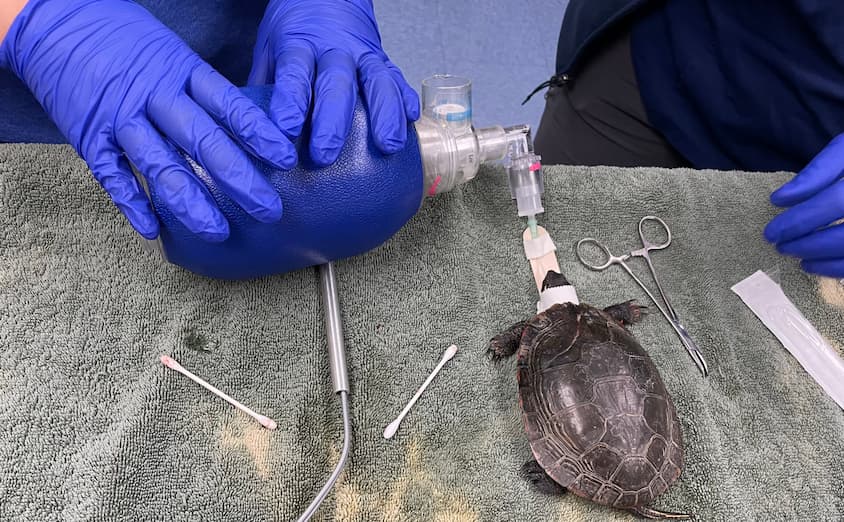
Now we just watch and wait, giving the shell time to heal. Even with a successful procedure, complications can still arise. In this turtle’s case, he had been dry docked or not allowed to swim in water prior to the shell repair and this paired with the combination of drugs and limited amount of fluids given, made him slightly dehydrated. Thankfully, after the repair, the patient was able to be fully submerged in water once again and was given additional subcutaneous fluids which helped to rehydrate him and continue moving him forwards on his road to recovery. In the past, we have seen turtle patients refusing to eat after shell repairs. Inflammation and infection can cause patients to lose their appetite, so we will monitor him and his nutrient intake carefully to hopefully prevent this issue.
Due to the timing of this patient’s arrival, and the length of time a shell fracture takes to heal, he will be with us long term, staying over winter in the clinic. Thanks to our amazing staff and volunteers he is on the road to recovery and will hopefully be released in the Spring of 2024 after his wounds are fully healed.
This article was written by Jacquelyn Merx, Class of 2026

